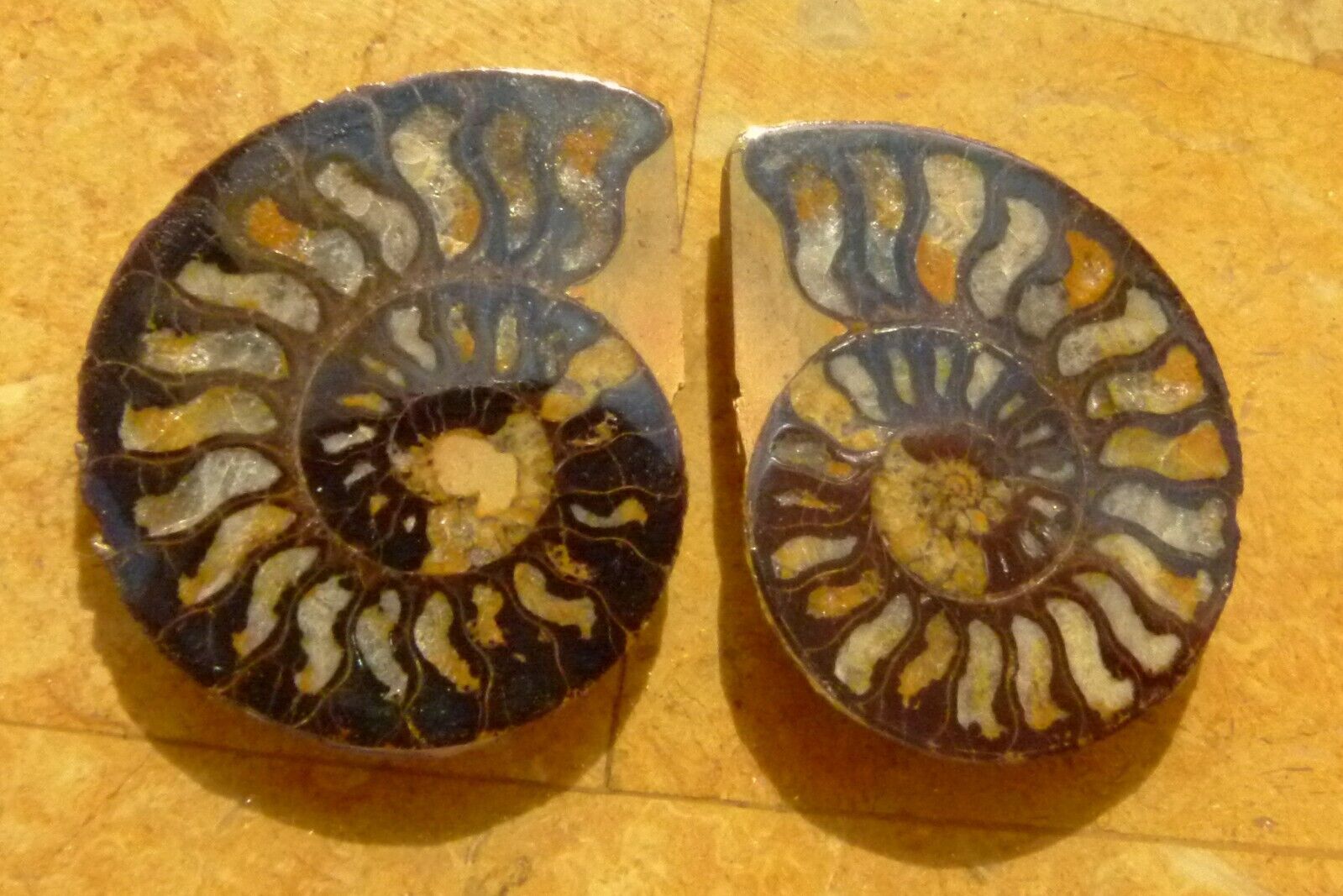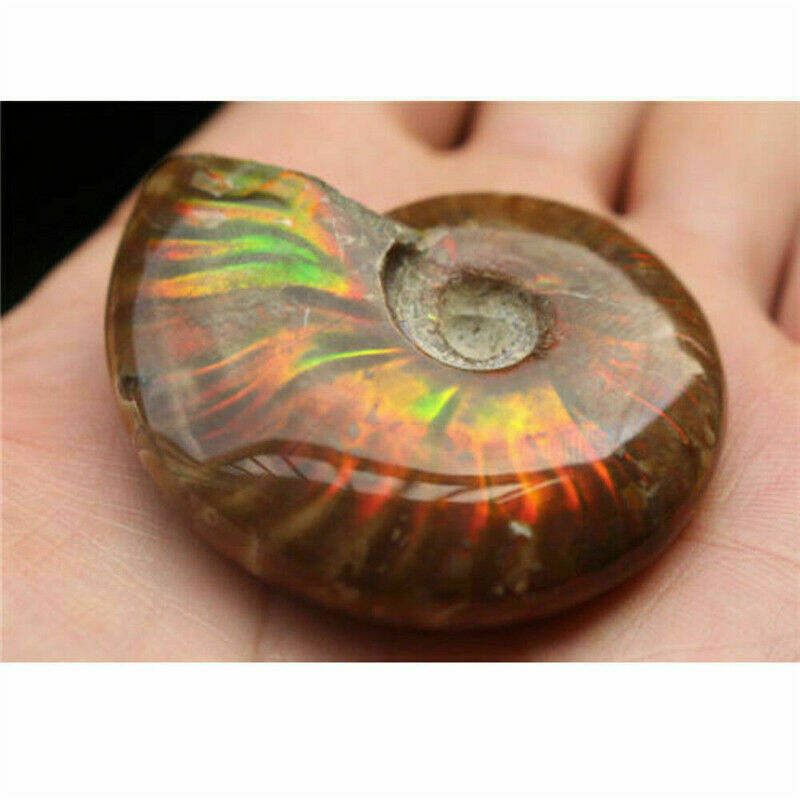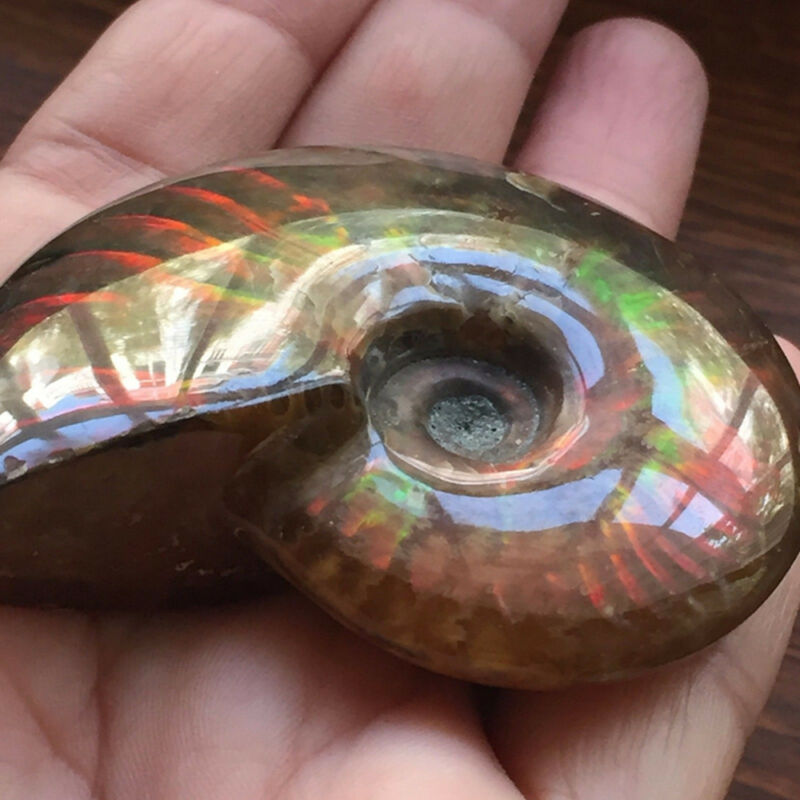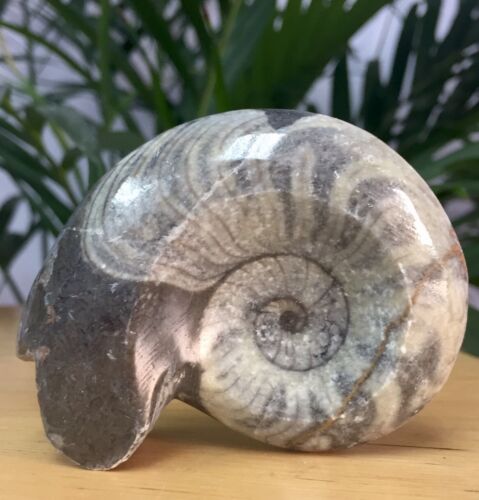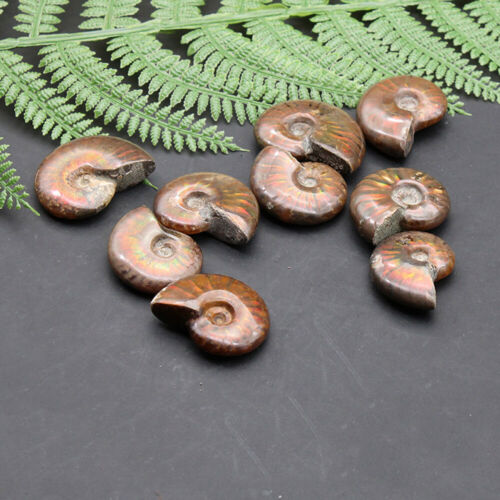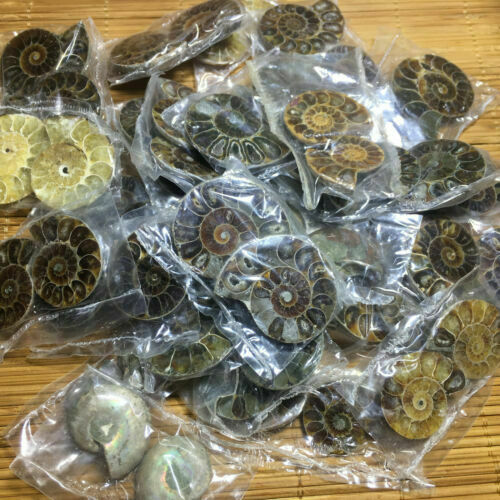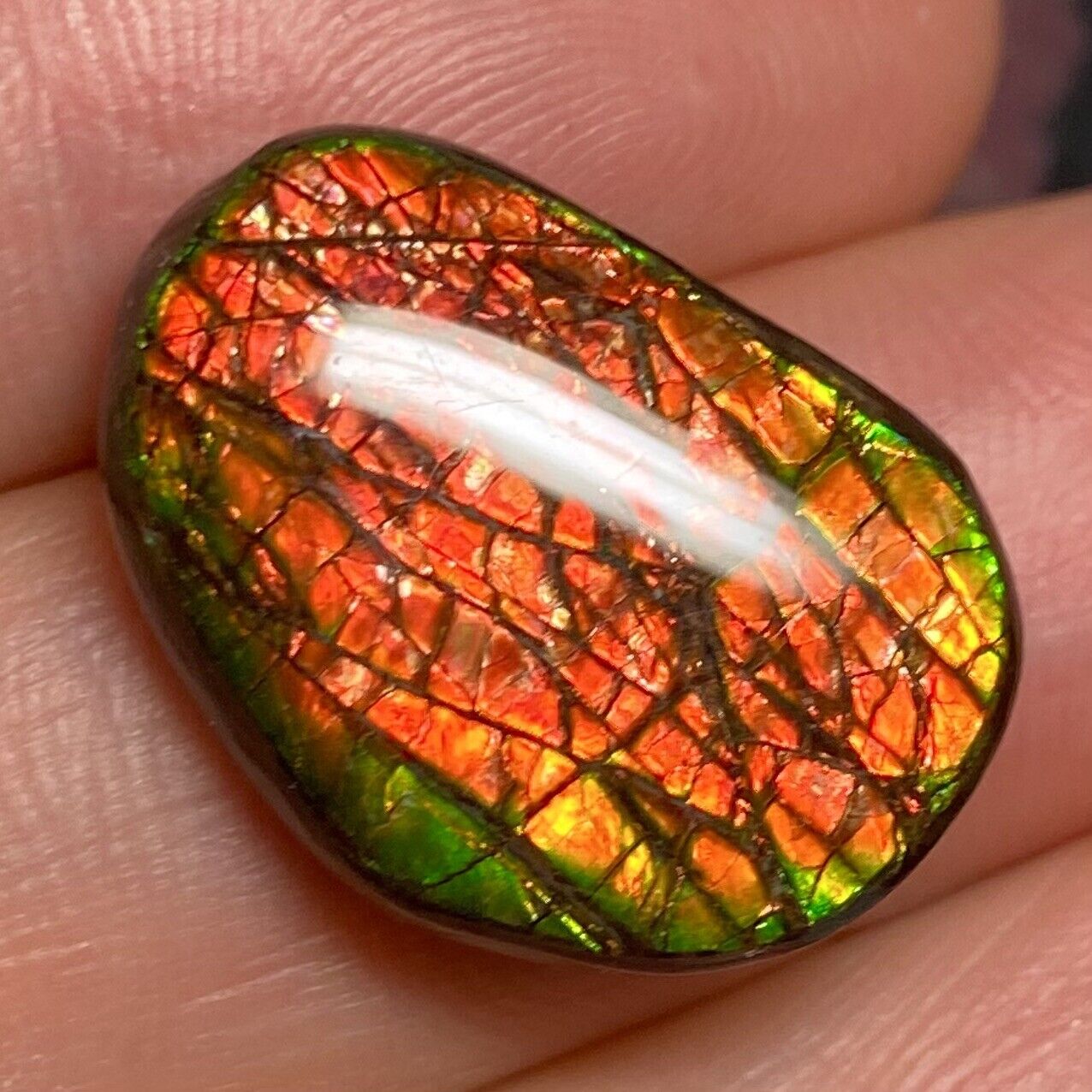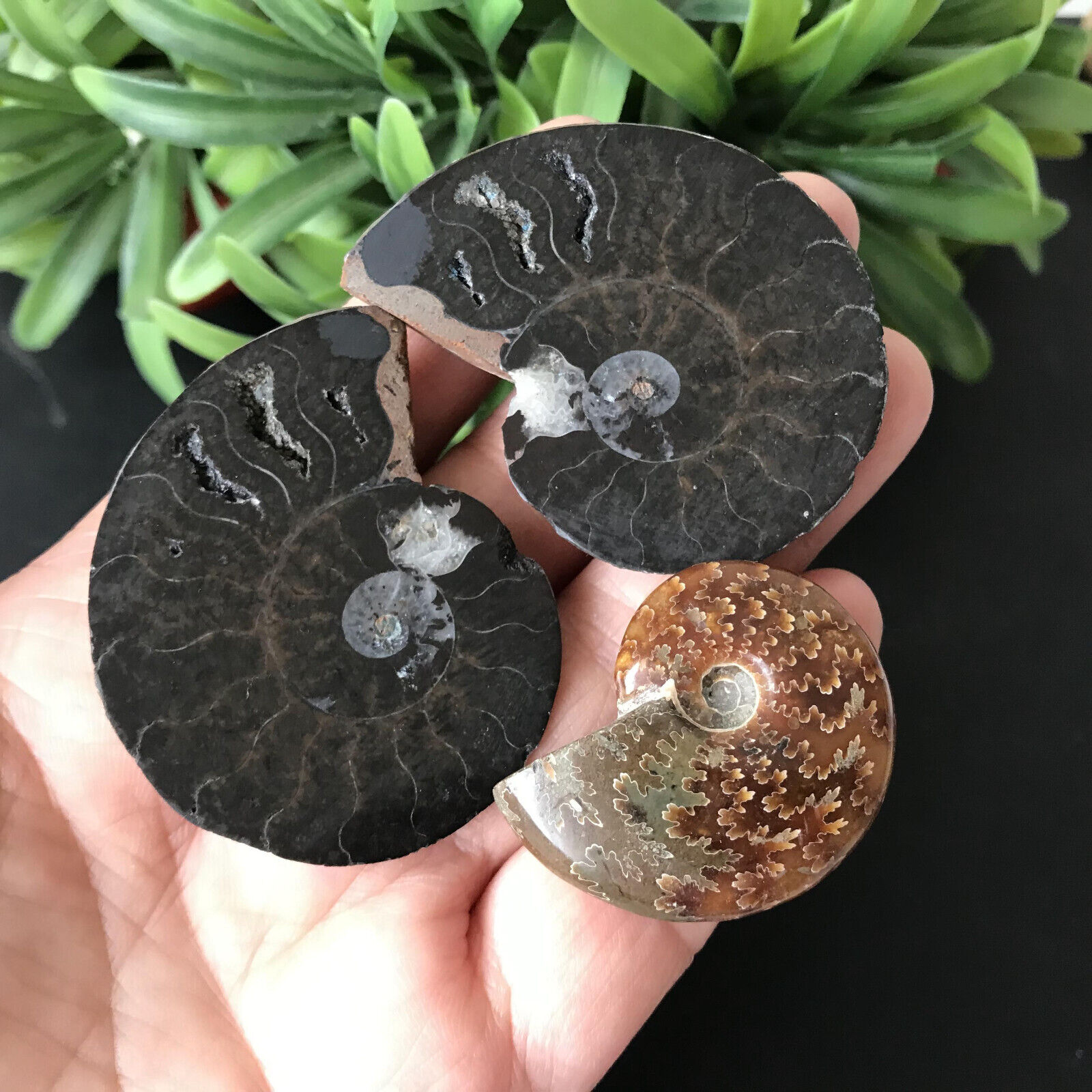-40%
Colorful HEMATIZED Black Iron AMMONITE Fossil SPLIT PAIR 22-7 Morocco 1¾" x 1¼”
$ 8.92
- Description
- Size Guide
Description
For your consideration, this colorful Hematite Ammonite Split Pair 22-7, from Nzala, Morocco. The surface of each half is lapidary polished to highlight the pattern of this cephalopod's growth chambers; the result is a stunning shiny metallic outline (from the hematite) contrasting with the lighter colors (calcite) of the coiled chambers. This pair also has excellent, detailed centers. You will receive the two sliced, hematite ammonite halves pictured, each half measures about 1¾
" tall x 1
¼
” wide. Light weight and high quality enough to make a unique and fabulous pair of earrings.
This collectible sliced ammonite fossil pair features natural hematite replacement with a striking, metallic-black surface that flashes like chrome silver when tilted against the light. The front faces of this split specimen are polished to display the enchanting natural artistry of this denizen of Jurassic seas, with finely detailed lines that define the chambers of the spiral. The backsides of this rare fossil show the tan matrix in which it was found.
Please view photographs as integral to the description of this vintage item and to evaluate its condition for yourself. You get the exact item shown, no other packaging or materials. All vintage and preowned items are sold as is.
A contemporary of marine dinosaurs, this ammonite was uplifted from the sea floor over the course of 170 million years and was found high in the desolate, wind-swept Atlas Mountains of Morocco. Ammonites were cephalopods similar to the octopus, but with an external shell. They resembled the living nautilus of today. As it grew larger, an ammonite moved further out from the center of the spiral, forming a new chamber and closing off the former chamber with a wall, or “septum."
Many ammonites traveled up and down the water column to great depths, living in the outermost chamber and filling the inside chambers with water or gas for buoyancy, like the ballast chambers of a submarine. Deep-water pressures and shell-crunching predators likely led to the evolution of ammonites elaborately buttressed chamber walls, visible as frilly suture marks where the chamber walls join the outer shell. This exceptional ammonite was a marine contemporary of early dinosaurs and dates from the Middle Jurassic. It fossilized in an environment rich in iron and sulfides, which results in this rare, naturally hematized fossil.
The spiral of the ammonite is a natural instance of the Fibonacci sequence, or the Golden Ratio, also known as the Divine Proportion and Golden Spiral. The Great Pyramid, Renaissance art, the spiral of sunflowers and pine cones, all draw upon this foundation of balance and beauty.






